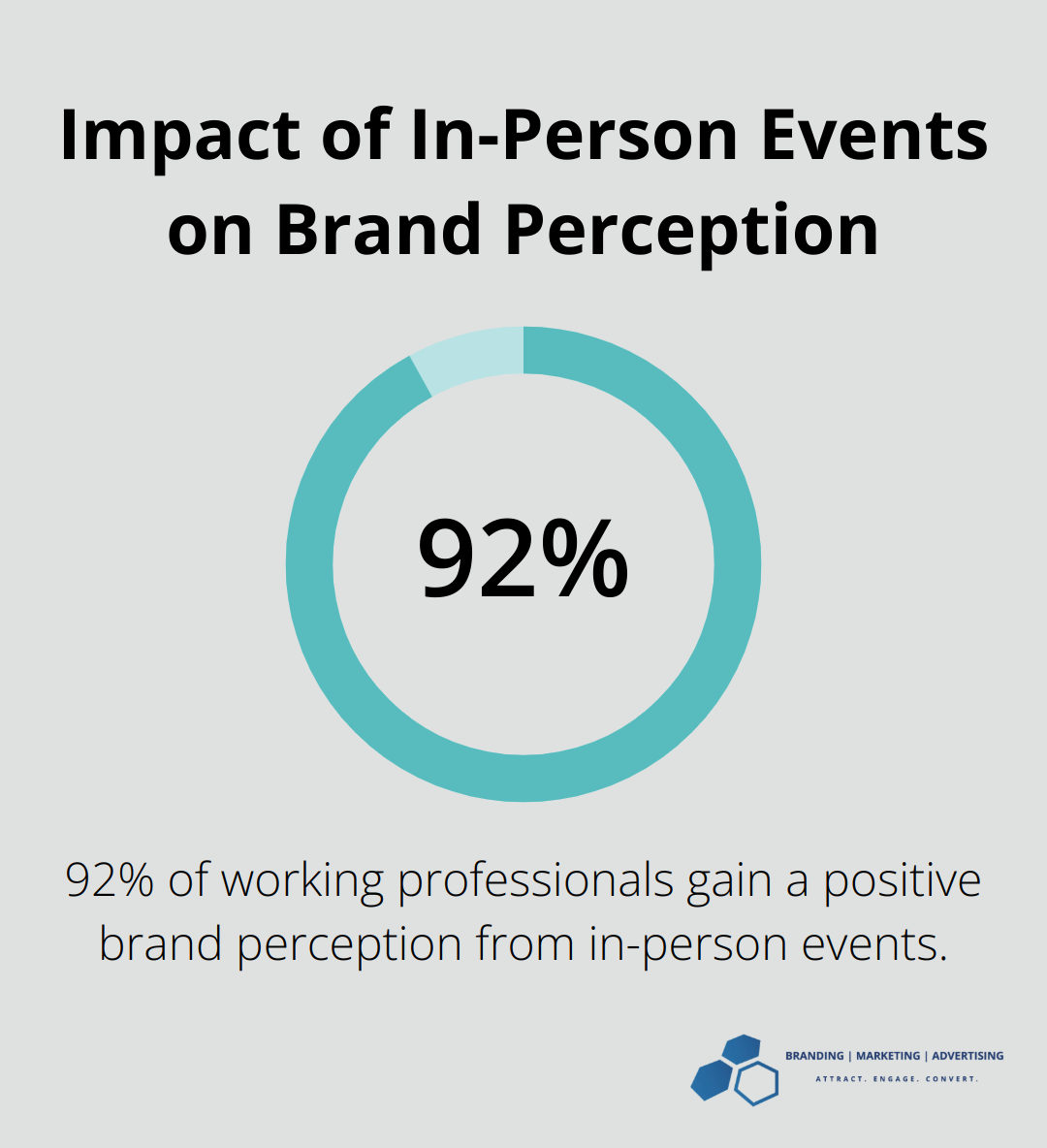How to Market in the Health Care Industry
At Branding | Marketing | Advertising, we understand the unique challenges of marketing in the health care industry. This sector demands a delicate balance between promoting services and maintaining ethical standards.
Our expertise helps healthcare providers navigate complex regulations while effectively reaching their target audiences. In this post, we’ll explore proven strategies to boost your healthcare marketing efforts and stay ahead in this ever-evolving field.
Navigating the Healthcare Marketing Maze
Healthcare marketing presents unique challenges and opportunities. The landscape demands a specialized approach to reach diverse audiences effectively while adhering to strict regulations.
Compliance in a Regulated Environment
Healthcare marketing operates under heavy regulation. The Federal Trade Commission (FTC) enforces strict guidelines to prevent deceptive practices. In May 2025, the FTC distributed more than $5 million in refunds to consumers affected by deceptive cancellation practices in healthcare. To avoid such issues, healthcare marketers must prioritize transparency and accuracy in all communications.
We recommend implementing a robust review process for all marketing materials. This process should involve legal experts who can ensure compliance with regulations like HIPAA and the Stark Law. Additionally, marketers should stay updated on changing regulations. Subscribe to industry newsletters and attend healthcare marketing conferences to keep abreast of the latest compliance requirements.
Building Trust Through Credible Content
Trust is paramount in healthcare. A recent study revealed that patients look to online reviews as they evaluate potential healthcare providers. Positive reviews serve as endorsements from previous patients, inspiring trust in potential new patients. These findings underscore the importance of building and maintaining a strong online reputation.
To build credibility, create high-quality, informative content. Healthcare firms that maintain a blog generate 13 times more chances of achieving a positive ROI. Share patient success stories (with proper permissions), explain complex medical procedures in simple terms, and provide valuable health tips. Always respect patient privacy and obtain necessary permissions before sharing any patient information.

Reaching Diverse Audiences Effectively
The healthcare industry serves a wide range of audiences, from patients to healthcare providers and insurers. Each group has unique needs and preferences. For instance, many patients start their healthcare journey with search engines, while healthcare professionals often rely on medical journals and industry events for information.
To effectively reach these diverse audiences, adopt a multi-channel approach. For patients, optimize your website for local SEO and maintain an active social media presence. For healthcare providers, consider advertising in medical journals and participating in industry events. For insurers, focus on demonstrating value and efficiency through case studies and data-driven reports.
Leveraging Email Marketing
Email marketing is a powerful tool in healthcare. Segment your email lists based on audience type and tailor your content accordingly. For patients, focus on health tips and appointment reminders. For providers, share updates on new treatments or technologies. For insurers, highlight cost-saving measures and quality improvements.
As we move forward, it’s clear that successful healthcare marketing requires a nuanced approach. In the next section, we’ll explore effective digital marketing strategies that can help healthcare providers stand out in an increasingly competitive landscape.
Digital Marketing Strategies That Work in Healthcare
In the healthcare industry, digital marketing requires a balance between attracting patients, building trust, providing value, and navigating complex regulations. We’ve developed strategies that deliver results while respecting the unique challenges of healthcare marketing.
Dominate Local Search Results
Patients often turn to search engines when they need medical care. In fact, 77% of people rely on search engines before booking an appointment with a healthcare provider. To capture this traffic, healthcare providers must optimize their online presence for local search.

Start by claiming and optimizing your Google Business Profile. Include accurate information about your services, hours, and location. Encourage satisfied patients to leave reviews-74% of patients consider online reviews important when choosing a provider.
Next, optimize your website for local keywords. Include location-specific terms in your page titles, meta descriptions, and content. Create separate pages for each service you offer, optimizing them for location-based searches like “orthopedic surgeon in [City Name]”.
Create Content That Educates and Converts
Content marketing in healthcare focuses on education. Patients seek reliable health information, and your content can fill that need while positioning your practice as a trusted authority.
Start a blog on your website and publish articles on topics relevant to your patients regularly. Explain complex medical procedures in simple terms, offer preventive health tips, and discuss the latest advancements in your field. This approach not only educates your audience but also improves your search engine rankings.
Keyword research and local competitor analysis are fundamental strategies in effective healthcare content marketing. They help you understand what your target audience is searching for and how to stand out from your competitors.
Video content proves particularly effective in healthcare marketing. Create short, informative videos explaining common procedures or answering frequently asked questions. Share these videos on your website, social media platforms, and even in your waiting room.
Engage Patients on Social Media
Social media platforms offer healthcare providers a unique opportunity to engage with patients and build community trust. However, approach social media marketing in healthcare with care and sensitivity.
Use platforms like Facebook and Instagram to share health tips, highlight staff members, and showcase your community involvement. Respond promptly to patient inquiries, but always respect privacy regulations. Never discuss individual cases or share patient information without explicit consent.
Consider partnering with local health influencers or patient advocates to expand your reach. These partnerships can help you connect with new audiences and build credibility within your community.
Nurture Patient Relationships Through Email
Email marketing remains a powerful tool for patient engagement in healthcare. Use email campaigns to send appointment reminders, share health tips, and keep patients informed about new services or technologies at your practice.
Segment your email list based on patient demographics or health conditions. This allows you to send targeted, relevant information to each group. For example, you might send information about managing diabetes to patients with that condition, while sending general wellness tips to others.
Always respect patient privacy and comply with HIPAA regulations in your email marketing efforts. Obtain explicit consent before adding patients to your email list, and never share sensitive health information via email.
These digital marketing strategies can help healthcare providers effectively reach and engage their target audience while maintaining the trust and credibility essential in this industry. However, traditional marketing techniques still play a significant role in healthcare marketing. Let’s explore how these time-tested methods can complement your digital efforts in the next section.
Traditional Marketing Techniques Remain Powerful in Healthcare
Direct Mail: A Personal Approach in the Digital Era
Direct mail campaigns provide a tangible way to connect with patients. The Data & Marketing Association reports that direct mail achieves a 9% response rate with house lists and a 4.9% response rate with prospect lists. These numbers significantly outperform email marketing’s average 1% response rate.
To maximize direct mail efforts, segment your audience based on demographics and health needs. Create personalized messages that address specific health concerns or promote relevant services. Include a clear call-to-action, such as scheduling a check-up or attending a health seminar.
Use oversized postcards or uniquely shaped mailers to stand out in the mailbox. Include QR codes that link to landing pages with more information or appointment scheduling options (this bridges the gap between traditional and digital marketing).
Print Advertising: Reaching the Right Audience
Print ads in medical journals and local publications still hold value. They allow you to reach a specific, engaged audience. For example, advertising in a medical journal can help you connect with other healthcare professionals for referrals or partnerships.
When designing print ads, focus on clear, concise messaging. Use high-quality images and include your unique value proposition. Incorporate a trackable element, such as a unique phone number or URL, to measure the ad’s effectiveness.
Local publications offer an excellent opportunity to reach potential patients in your community. Try advertising in neighborhood newsletters, local magazines, or even school yearbooks to increase visibility among your target demographic.
Face-to-Face Marketing: Relationship Building
Networking and community involvement remain essential in healthcare marketing. Attend industry events to build relationships with other healthcare professionals, potentially leading to valuable partnerships or referrals.
Sponsor or participate in local health fairs and community events. These provide opportunities to interact directly with potential patients, offer free health screenings, and demonstrate your expertise. In-person events create a positive brand perception for 92% of working professionals.

Host your own events, such as educational seminars on common health issues or open houses at your facility. These events position you as a trusted resource in your community and allow potential patients to become familiar with your services in a low-pressure environment.
Integrating Traditional and Digital Strategies
At Branding | Marketing | Advertising, we believe in integrating these traditional techniques with digital strategies for a comprehensive marketing approach. The combination of the personal touch of traditional marketing with the reach and measurability of digital methods creates a powerful, multi-faceted marketing strategy that resonates with patients and drives growth.
Traditional media remains a potent force for health advertising. As the global healthcare advertising market approaches $44.56 billion in 2025, the competition for attention and trust is only growing. However, combining traditional approaches with innovative marketing strategies can help create brands that leave a lasting impression in the healthcare industry.
Final Thoughts
Marketing in the health care industry demands a balance between regulatory compliance and effective audience engagement. Digital strategies like SEO and content marketing complement traditional methods such as direct mail and community outreach. This integrated approach allows health care providers to connect with patients, build trust, and establish authority in their field.
The future of health care marketing will focus on personalization, AI-driven analytics, and the promotion of telemedicine services. These trends will shape how providers reach and interact with patients, requiring adaptable marketing strategies. Health care organizations must stay ahead of these developments while maintaining a strong foundation in both digital and traditional marketing techniques.
Branding | Marketing | Advertising helps health care providers navigate this complex landscape and achieve their marketing goals. We understand that effective marketing in the health care industry goes beyond patient attraction-it’s about creating lasting relationships, providing value, and improving health outcomes. Our expertise can guide you through the evolving world of health care marketing.












